The King's Head & Brewery
-
The King's Head
- As can be seen below the King's Head is shown on Chapman's 1787
map of Newmarket at what is now No.92-94
High Street:-
-
It's believed that originally the King's Head was a public inn, but
none of the earliest Newmarket trade directories list it as such.
The earliest record shown is for Tyrell Moody in 1823 as a brewer in the High Street and by 1841 it can be confirmed
using the sequence in the census that this is the location of his
business - hence by this time the building had fully converted to
being just a brewery. The King's Head is not listed as a Tavern, Inn
or Public House in Robson's Directory of 1839.
- A detailed timeline of the occupancy of the King's Head on the
High Street can be seen on the page for No.92-94
High Street, so this page will just concentrate on the familial
and other history that influenced the fortunes of the brewery. The
familial history is based upon BMD, census and personal family tree
details shown on Ancestry.
[Note from webmaster - If any anyone has any further information or
finds that anything shown on this page is incorrect, please E-MAIL
me.]
- Tyrrell (senior - spelt Tyrel on the record) married Mary Poole in
Burwell on 7th June 1773. Prior to young Tyrrell and Thomas being born in St. Mary's Newmarket in
about 1781, their parents had another son, also named
Tyrell (Tyrill), baptised in Burwell on 23rd May 1774, sadly his
burial is listed later that same year. Tyrrell (senior) is also
listed in the Electoral Register in Newmarket in 1790.
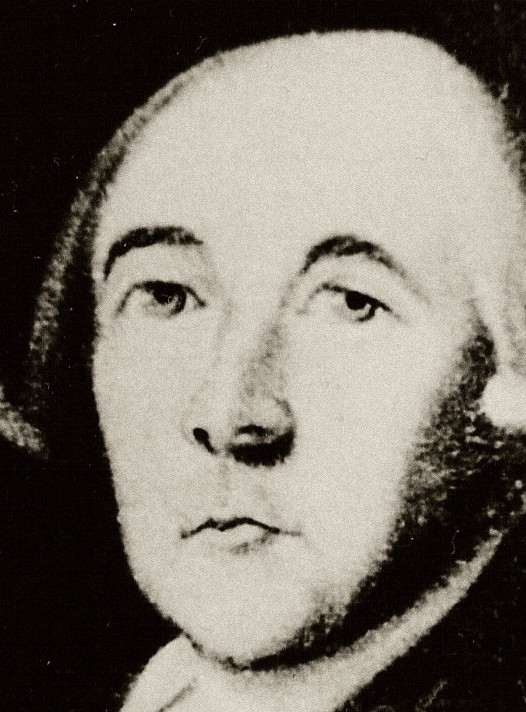
Tyrrell Moody (1741-1815)
- Tyrrell (junior) continued his brewing trade on the High Street until his death on 19th January 1858.
_1858_Probate.jpg)
- In 1861 Tyrell's brother Thomas and his daughter Harriett had moved
into the King's Head - Thomas is listed as a Master Brewer & Maltster.
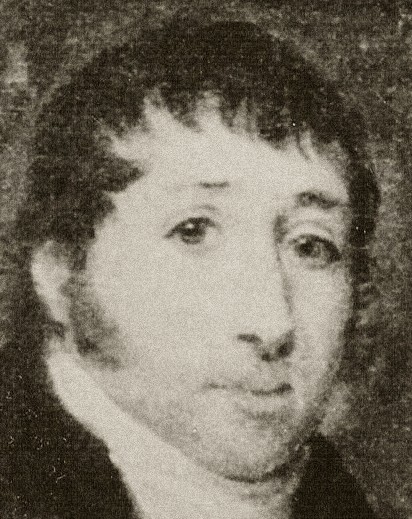
Thomas Moody (1781-1865)
- Thomas' time in charge didn't last long though as he himself died on 21st December 1865.
_1866_Probate.jpg)
-
The Brewery & family dynasties
-
At this point in the history of this brewery we have to mention a
few other important familial dynasties in Newmarket that have had an
influence on this brewery - firstly there were the Pipers - father and son,
both Stephen Piper. As their story is quite long, details about them
can be found on the page for
Kingston House,
where the son Stephen Piper Jnr. set up his business.
As for the father; Stephen Piper Snr., in July 1833 he sold the brewery here in Albion Street to Charles Phillips. As it turns out Charles Phillips was one of the most important people in the history of not only this brewery, but of many other of the local 'watering-holes' both in and around Newmarket (before Greene King that is).
It was 32 years after his purchase of the brewery, on the 6th June 1865, that Charles sold-on his entire business - details of which are listed in this newspaper article below:-
Bury and Norwich Post
Tuesday 06 June 1865
NEWMARKET.
Sale of the Brewery and Estate of C. Phillips, Esq. - In consequence of C. Phillips, Esq., the Coroner of this district, having relinquished his business and retired from the county, his extensive brewing establishment, residence, inns, and other property were disposed of by public auction at the White Hart Inn, Newmarket, on Thursday last.
There was a good attendance, the principal brewers of the country being well represented, and the bidding throughout was spirited.
The estate was divided into 35 lots, the first of which was the brewery and requisites, which realized 1200l. ; the second, the residence attached, which made 1400l. ; the Barley Corn, Newmarket, made only 390l. , and the several other inns in the town and surrounding neighborhood sold as follows: - The White Lion, Newmarket, 820l., purchased by Mrs. Arber, the tenant; the Two Brewers, Albin-street, Newmarket, 430l. ; the Dolphin, Newmarket, 250l. ; the Wheatsheaf, Newmarket, 430l. ; the Horse and Groom, with dwelling and bake-house, Newmarket, 590l. ; the Griffin, Isleham, 700l. ; the White Horse, Exning, 720l. ; the Black Swan, Reach, 450l. ; the Bushel, Burwell, 200l. ; the Anchor, Burwell, 770l. ; the Rose, ditto, 410l. ; the Horn, Soham, 230l. ; the Plough, ditto with 3 acres of land, 320l. ; the Plough, with upwards of 3 acres of land, at Ashley, 780l. : the Cock, Kentford, 400l. ; the Bull, with land, Borough Green, 700l. ; the Waggon and Horses, Dullingham, 435l. ; the Prince Albert, with 2 acres of land, 100l. , which with other land and house property amounted to about 14,000l.
[ l. = £ ]
-
Charles Phillips
-
So who was Charles Phillips? and why was he so important to not only the King's Head brewery, but brewing in general?.
Well to start with his main business was not as a brewer (though his father's was) - he was a solicitor, or attorney as they also liked to be called.-
In Pigot's 1839 directory (when he first appears in the Newmarket directories) he's listed as Phillips, Charles, attorney in Albion Street. This is of course exactly where we are with this brewery (though it's not known precisely where his office was in this road).
-
In Robson's Directory for the same year he's listed as Phillips, Chas. Brewer, & Spirit & Coal Merchant, and also Phillips, Charles, Solicitor & Coroner. Solicitor & Brewer? - to us this seems a strange business combination - maybe it's a Victorian thing(?)
-
In Slater's 1850 directory he's listed as Phillips, Chas. (attorney & coroner), Albion Street, and also as Phillips, Charles, brewer in Wellington Street.
-
In Gardner's 1851 directory, still in Albion Street, he's listed as Phillips, Charles, solicitor, brewer, & agent to the Equity & Life Assurance Company, and coroner for Cambridgeshire.
-
Once again in Whites Directory of 1855 he's listed as an attorney and brewer in Albion Street.
-
As detailed above, in July 1833 Stephen Piper Snr sold the Albion Street brewery to Charles. The 1839 Robson's listing where he's shown as a Brewer, & Spirit & Coal Merchant matches the same trade titles that Stephen had in 1830, so there seems to be some continuity here.
-
Charles' solicitor's business later became known as Phillips & York, and the York that was part of this partnership was James Neal York, who seems to have taken over Charles' solicitor business when he later left Newmarket (which was sometime between 1855 and 1858).
In the 1869 Post Office Directory James is listed as the Deputy-Coroner for the County of Cambridge. Details about him can be found on the page for No.78 High Street, where he lived for many years and also for Deva House - No.90 High Street, which is not only where he died on 9th July 1886, but is also the location of where the King's Head Brewery originated.
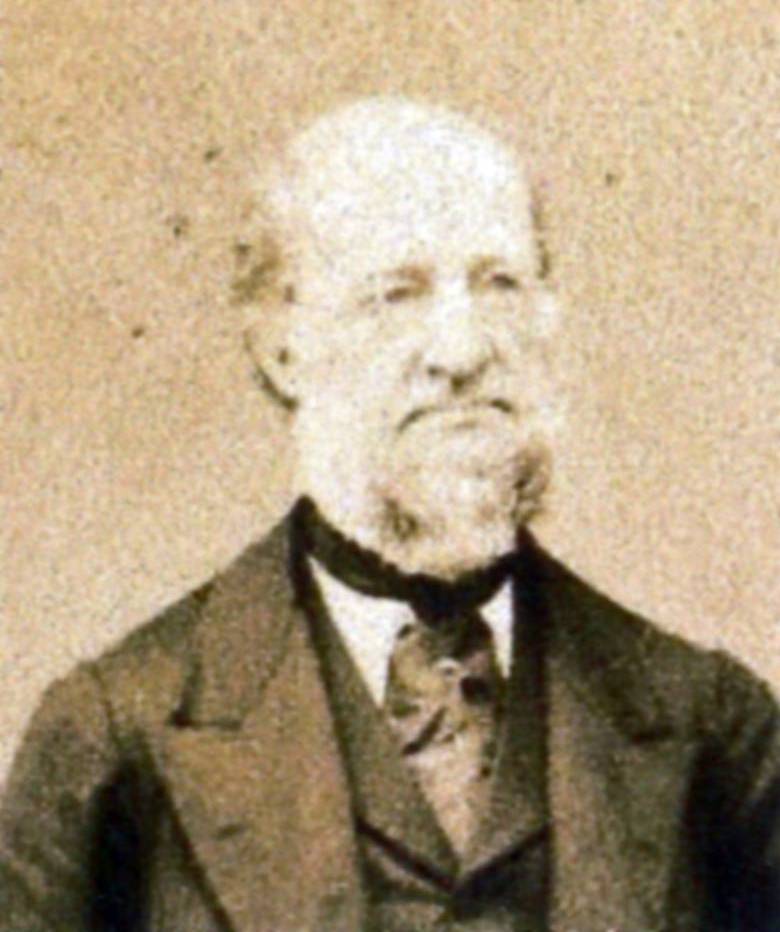
Charles Phillips
-
The son of Joseph and Judith (neé Dix), Charles Phillips was born in 1803 in Stamford, Lincolnshire. His father owned and ran the Stamford Brewery Ltd. in Water Street. The first listing for Joseph as the brewer here was in 1791, having bought the brewhouse from Thomas Trueman.
Stamford was eminently suitable as the location for a brewery; due to the presence of the canal that had been built there during the time of King James I. The canal’s principle function was to transport agricultural produce, from the wash, via Spalding and Crowland. Particularly important to the brewery, was the transport of barley used in malting. (The canal has now largely disappeared, but its course and some of its structures can still be traced in the landscape.)
Joseph had previously been a baker in Royston and one of his reasons for leaving there may have been that he had been rejected by the Quakers for marrying outside the religion in 1789. His father Thomas also seems to have moved to Stamford.
The Phillips family lived in Welland House, No.16 Water Street, which more recently became the Junior House of Stamford Girls' High School and is now a retirement home. Further details about the brewery and house can be found on these web pages:-
http://www.british-history.ac.uk/rchme/stamford/pp159-162
Stamford Boys http://stamfordboys.uk/places/water-street/
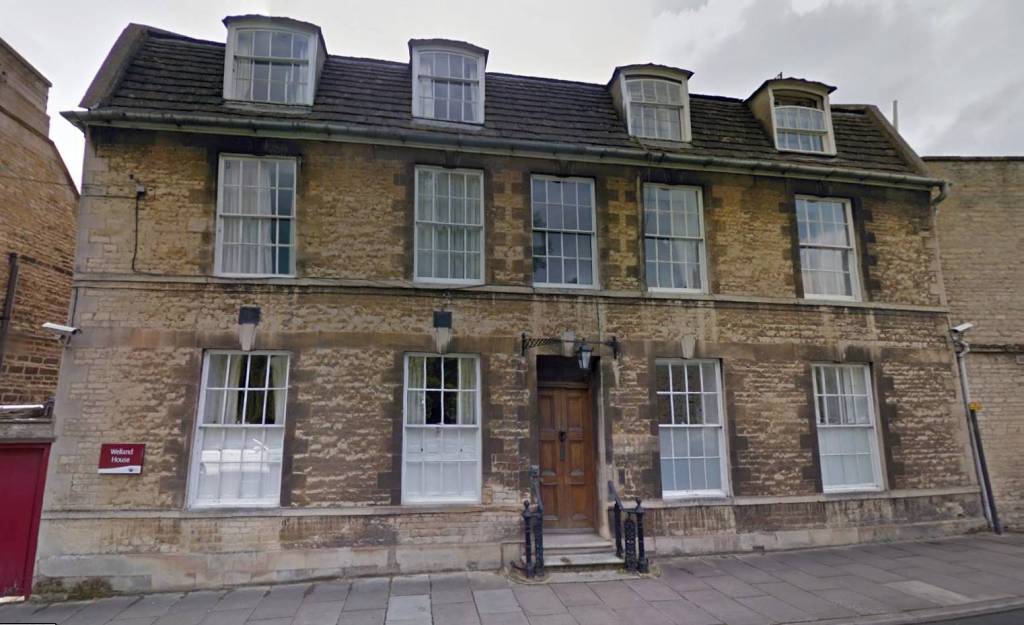
Welland House, No.16 Water Street, Stamford
-
Charles Phillips’ time in Newmarket drops in between the 1841 and 1861 censuses (the 1851 census for St Mary’s is missing; so we can’t see him on that). But his presence in Newmarket is clearly shown by the baptism of his children at St Mary’s church:-
- Louisa Phillips 20th May 1838
- Annie Phillips 20th October 1840
- Horatio Alfred Phillips 1st September 1844
- Joseph Phillips 7th June 1848
-
Charles married his first wife Louisa Harper on 13th January 1834 at All Saints church in Stamford, but sadly she died on 30th April 1849 and he later married again to Diana Hills.in 1852 at Yarmouth in Norfolk.
His next daughter; Agnes Phillips, was born in 1858 at Aviemore in Scotland; so clearly by then Charles had left Newmarket. On the 1861 Scotland census he’s shown living at Duthil, Moray, in Scotland, as a farmer of 8 acres.
-
His brother Henry Phillips (1805–1877) emigrated to New Zealand; so a lot of the family descendants are now based in that country.
-
In 1881 Charles can be seen living at No.5 Buckingham Vale in Clifton, Gloucestershire (near Bristol), with his wife Diana, his daughters Louisa, Agnes and his youngest daughter Elsie. Charles died in Clifton
in 1887 aged 83.
-
The Royston & Newmarket Brewery - Messrs. Phillips Bros.
-
The Phillips family’s dynastical influence in brewing doesn’t stop at Stamford and Newmarket though as Charles brother; John Phillips, became the owner of the brewery in their father Joseph’s hometown of Royston - the Royston Brewery.
-
As shown in the newspaper article above,
in 1865, because of ill-health Charles sold his Newmarket brewery
and estate. As it turned out it was his brother John who was the purchaser, and he then sold it on to the Moody Brothers in July 1866. John then
also sold some of the pubs in 1870 while trading as Phillips Bros.
Though the Phillips brothers sold their brewery in Newmarket they clearly still had some influence in the town as shown by the following newspaper article:-
Bury Free Press
Saturday 09 October 1869
THE ROYSTON & NEWMARKET BREWERY. MESSRS. PHILLIPS, BROS.,
BEG to inform the inhabitants Newmarket, and its vicinity that they have appointed MR. PERRET, Of that Town, their SOLE AGENT for the District, and hope by strict attention all Orders merit continuation of that large amount of patronage which they have already received.
(The Mr. Perret listed in this article was Artur Pierre Perret, born in France, he married Mary Taylor in Newbury in 1856. During their time in Newmarket the family lived at Morton Villas, on the corner of Queen Street and Park Lane, and Mary was a teacher. Sadly though he died on 30th December 1870 at Teignmouth in Devon, just one year after this article, and in 1871 his widow Mary can be seen living in West Lockinge in Oxfordshire with her mother Sarah Taylor, her son Arthur George Perret and her daughter Anne Sarah Rose Perret, both born in Newmarket in 1862 and 1863 respectively. Even sadder still Mary died only two years later on 28th September 1873 at Iffley Road In Oxford, leaving the two young children parentless. This doesn't seemed to have been too detrimental though as many years later, during the 1930s and 1940s, Arthur George's son, another Arthur George Perret worked as a tyre engineer for Dunlop, at their Fort Dunlop works in Birmingham.)
-
John Phillips died in Royston in 1871 and in 1874 his son (another John) went into partnership with his son; Joseph Edwards Phillips, and the brewery became known as J & J E Phillips Ltd., located at the junction of Baldock Street and Kneesworth Street in Royston.
In 1948 Phillips’ brewery sought a merger with Greene King, which failed and in 1949 it was taken over by J.W. Green Ltd (now Whitbread). But by 1951, the old brewery building was sold to the engineering firm Thomas Newman and the Royston Brewery was no longer (part of it is now the site of Morrisons in Royston).
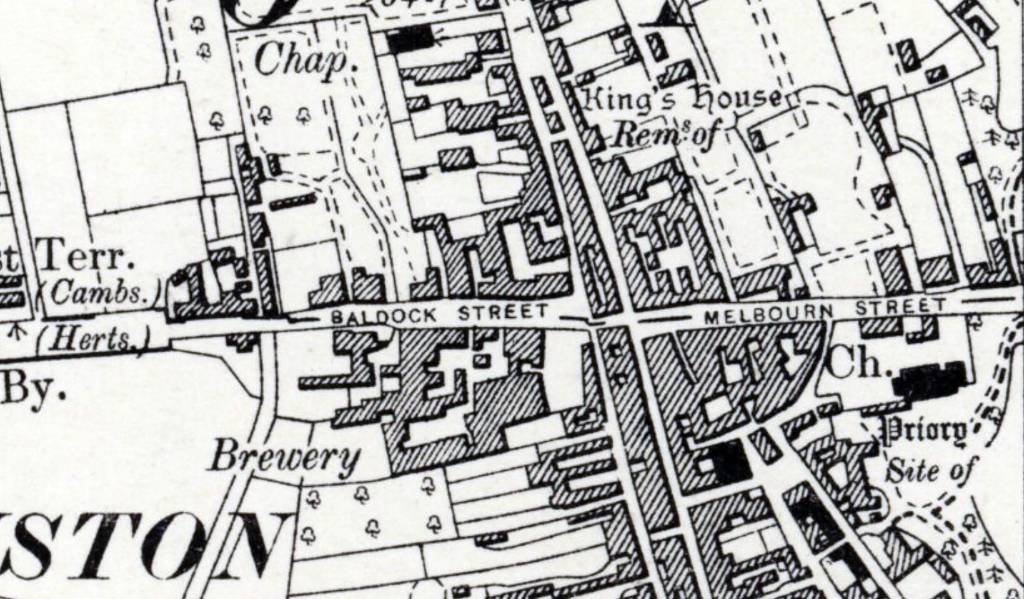
Map of Royston Brewery in 1896
-
The Baldock Brewery - Sophia & Fanny Emily Agnes Phillips - Simpsons Brewery
-
Other local breweries that have witnessed the influence of the
Phillips family is the High Street brewery in Baldock. On 21st July
1821 at Stamford, Charles & John's sister Sophia (b. Stamford
1801) married Richard Simpson (b. Moulton, near Spalding 1796).
Their two sons Joseph and Thomas George bought the Pryor's Baldock
brewery in 1853.
Then on 9th April 1885 Charles’ grandniece (the granddaughter of his brother Joseph) - Fanny Emily Agnes Phillips married her cousin Evelyn Simpson and they took over running the Baldock Brewery.
The brewery was taken over by Greene, King & Sons Ltd, Bury St Edmunds in 1954 and changed its name to Greene King (Baldock) Ltd in 1963.
In fact the Phillips family brewery influence is considerable and many more details about them can be found on this web page:-_1893_Probate.jpg)
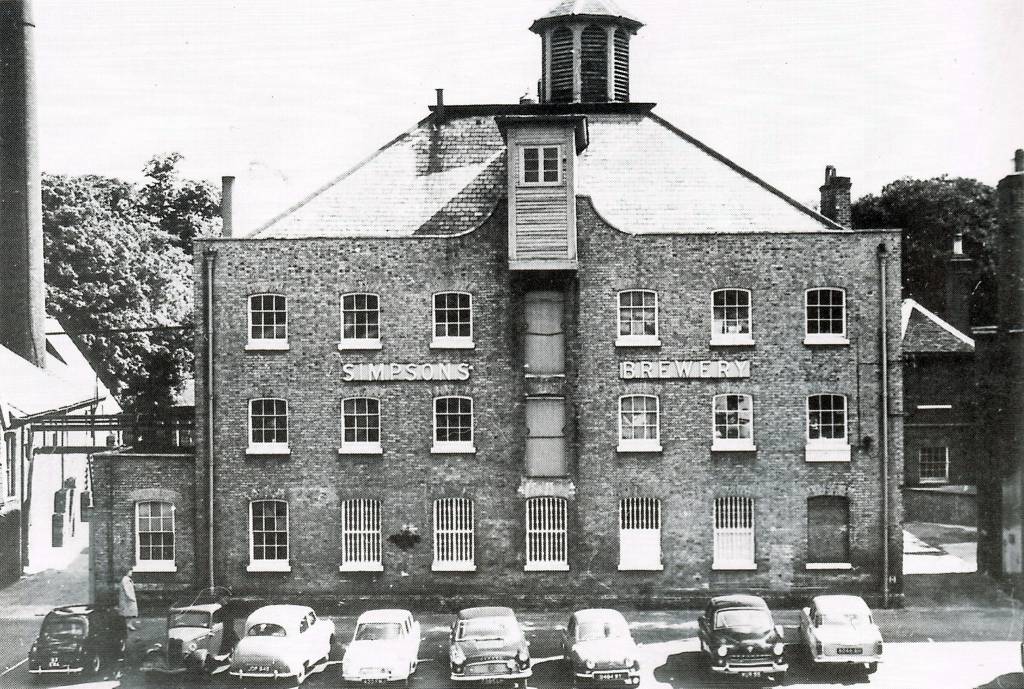
Simpsons Brewery, Baldock - 1960 (demolished 1968)
(Many thanks to Baldock Voices, by Edna Page and Nora Penfold)
 http://www.breweryhistory.com/journal/archive/111/bh-111-037.html
http://www.breweryhistory.com/journal/archive/111/bh-111-037.html
All this in-depth exploration of the Phillips family has somewhat moved us away from Newmarket, but as the influence of their various breweries was extensive, it’s important to understand who Charles Phillips was to make sense of what happened here in Newmarket.
-
The Moody Brothers' Brewery
-
Following the death of Thomas Moody senior in December 1865 it appears
that Charles Phillips' brewery was purchased by the Moody grandsons - Walter Tyrell Moody, Robert (Hassall) Moody and Frederick Moody,
and the business here in Albion
Street became known as the 'Moody Brothers Brewery'.
- None of the brothers were skilled in the brewery trade - between
1861 & 1863 Walter Tyrell Moody was selling sheet music in Colchester
High Street, in 1861 Robert (Hassall) Moody was a Master Grocer on
Mill Hill and in the same year Frederick Moody was an Accountant.
- In 1861
their father; Robert Moody (living in Exeter Place, Newmarket), had
been listed as a 'Manager for a Brewer & Wine & Spirit
Merchant', presumably working for his father. Previously in 1839 and
1844 he had been the licensee of the Five Bells in Newmarket.
-
There's a point of explanation that needs to be given here - Thomas Moody and Harriett Hassall
had a few children, but it appears that at least both daughter
Harriett (bap. 13th November 1823) and another son called Henry
(bap. 15 November 1820 - not shown in the family tree above) were baptised
listing only Harriett Hassall (with various spellings again) as
their parent (no father's name given). The marriage of Thomas and Harriett Hassall has also
yet to be found - so it does look like that possibly they never
married.
Daughter Harriett was re-christened on 31st May 1828 as Harriett Moody Hassall, so at least by then Thomas seems to be being recognized as the father .... and then slowly over the years the Moody surname came to replace Hassall:-
On the 1841 census Robert gives his name as Robert Moody Hassall (it's mis-spelt as Haysell) and his wife Frances and all their children have the same surname (he's listed as a Publican, presumably in the Five Bells - the address is Mill Hill).
The 1851 census for St. Mary's Newmarket is missing, but by the 1861 census it was now Robert and Frances Moody ... living in Exeter place ... next door to Thomas & Fanny Ennion. When Fanny married Thomas Ennion in 1857 she was Fanny Moody Hassall - she'd kept her Hassall surname all the way up to marrying Thomas ... and yes - Robert Moody and Fanny Ennion were father and daughter.
-
As a precursorsor to what was to come next the brewery leased part
of their estate in 1868:-
Bury Free Press
Saturday 29 August 1868
Cambridge Independent Press
Saturday 05 September 1868
TO LET, THE above old-established Commercial Inn. The Furniture by Valuation {about £150), at the option of the tenant.-Apply to R, Moody, King’s Head Brewery, Newmarket.
[The only known 'Commercial Inn' that was part of the brewery's estate was the Bull Inn in the High Street and Robert Moody junior was the landlord there at the time. So although no other newspaper articles have been found to confirm this, this is the most likely premises that was being let.]
- It's not known if Robert senior had continued on as manager, but between
them his sons seemed to be unable to run the brewery and on 1st June 1869, Moody Brothers Brewery was declared bankrupt.
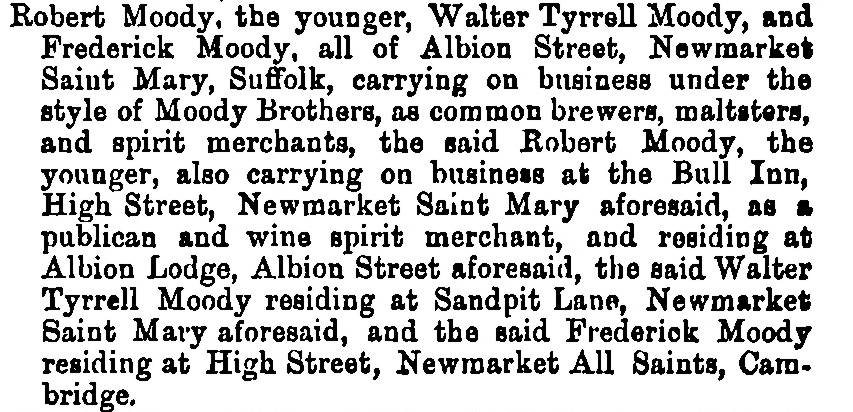
The Edinburgh Gazette June 11 1869 page 681
Saturday 10 July 1869, Cambridge Independent Press
King's Head Brewery, Newmarket.
THIS EXTENSIVE BREWERY,
WITH SEVERAL
INNS & PUBLIC-HOUSES
Belonging there to, and the
Plant, Stock-in-Trade, Utensils, and Effects,
Upon the Brewery, in Newmarket, will shortly be advertised for SALE, unless a sufficient offer made for the entirety by Private Contract.
THE Services of the Senior Partner in firm of the Messrs. MOODY BROTHERS, have been retained for a short, period, in order that, until the disposal of the Business and Premises, the customers of the Establishment may be supplied with the same excellent Beer and Ales as heretofore.
Newmarket, 30th June, 1869.[In Bankruptcy].
Re Moody Brothers, Newmarket.
TO BE SOLD BY AUCTION, BY
Mr. E. FEIST,
Upon the premises, Sand Pit Line, Newmarket, on Thursday, the 15th day of July, 1869,
ALL the Modern HOUSEHOLD FURNITURE, China, Books, Pictures, and Miscellaneous Effects of Walter Tyrell Moody, one of the above named Bankrupts.
The Sale will commence at 12 o'clock precisely.[In Bankruptcy].
Re Moody Brothers, Newmarket,
TO BE SOLD BY AUCTION, BY
Mr. E. FEIST,
Upon the premises, High-street, Newmarket, on Friday, the 16th day of July. 1869,
All the Modem HOUSEHOLD FURNITURE. Chins, Books. and Miscellaneous Effects, of Frederick Moody, one of the above-named Bankrupts,
The Sale will commence 12 o'clock precisely.
Catalogues of the above Sales may had at the offices of the Auctioneer, High-street, Newmarket; at his Stand in the Corn-Exchange; posted free on application.
- After the bankruptcy Robert Moody (senior) became a 'House & Land
Proprietor' and moved in next door to his sister Harriett, in the
High Street, into what was to become Wrexham House (see below for
details), living there until he died in on 1st March
1875. Interestingly his probate gives both his initial full name;
Robert Moody Hassall and his later name; Robert Moody.
_1875_Probate.jpg)
- Robert Moody and his wife Frances are buried together in Newmarket
cemetery.
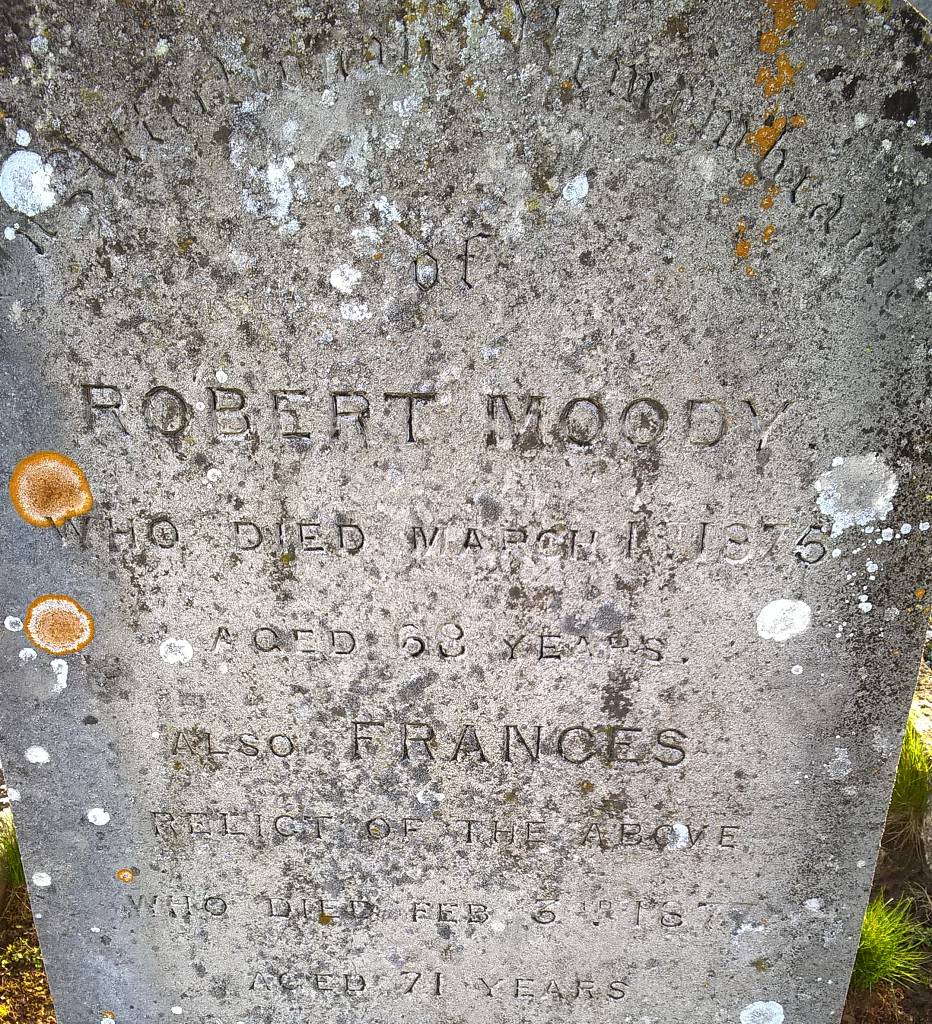
-
Robert's eldest son Walter Tyrell Moody became a School Master in Eaton's
School, Wimblington near March.
-
Robert (Hassall) Moody moved into a house in the High Street near
the Cambridge Heath and became a Racing Official (Huntsman).
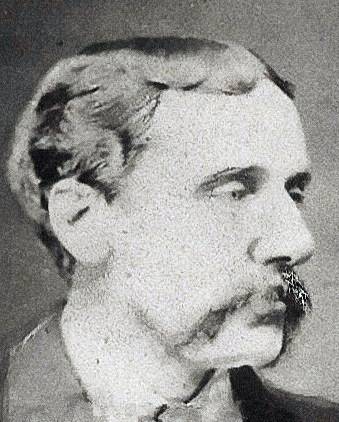
Robert (Hassall) Moody (1839-1916)
-
The youngest of the brothers, Frederick Moody, became an Auctioneer,
then a Brewer's Clerk, moved to Moat Terrace, Soham as a general
clerk, then a Newsagent before finally returning to be an
accountant.
Frederick married Isabella Hayhoe, daughter of the trainer Jospeh Hayhoe; the trainer at Palace House stables.
-
King's Head Brewery
- It could have all come to an end for the brewery at this time, but
the saving grace came from the brother's aunt and Robert senior's
younger sister - Harriett Moody - who clearly being a very strong
character, turned-around the brewery's fortunes into a very successful business,
renaming it the King's Head Brewery.
Saturday 12 August 1871, Cambridge Chronicle and Journal
NEWMARKET.- Robbing Employer.-
At the Suffolk Assizes, last week Arthur Chapman, William Millington, and George Hammond were charged with having stolen a coomb of malt, 11½ lbs. of hops, some brandy, rum, beer, and sack, the property of Harriett Moody, at Newmarket, on July 4th. The prosecutrix is the owner of the King's Head Brewery, Newmarket; Chapman was a drayman, and Millington a horsekeeper in her service, whilst Hammond was the service of Mr. C. E. Hammond, banker, and occupied a room over stables adjoining the brewery premises. Upon the premises are two storehouses, one for beer alone, and the other for beer and liquor, and the custom is that keys of these storehouses are hung in the office, and the keys of the office are taken to Miss Moody's. Circumstances gave rise to the suspicion that something was going on which was not right, and the beginning of July Mr. Charles Bosworth, the manager at the brewery, placed the keys in the counting-house in such position that he could tell whether they were moved during the night, and in the morning found they had been moved. On July 3rd, Mr. Bosworth and Miss Moody were out, and returned at about l at night, Millington being at the brewery to meet them on their return, and he then went away and would the ordinary way return to work at six in the morning. Meanwhile Inspector Steggles had been in the brewery on the watch from six to twelve. He took his station at the window of the malt chamber, and at ten minutes past nine Millington went into the stable and then left the premises. At half-past ten Millington and Hammond went into the stable, and after being there ten minutes went out into the street. At eleven Millington and Hammond returned, went to the stable, where candle was kept, which Millington carried to the office, the door of which he unlocked, and they went to some bottles, and Steggles saw through the window, one of them draw his hand across his mouth. They then left. Millington waited in the street till Miss Moody and Mr. Bosworth returned. Steggles again went on the watch at four o'clock. Shortly before five Millington went on the premises, and threw some stones at the window of Hammond's room, and then took some empty bottles from a rack and put them into his pocket. Hammond next came into the yard and both went into a store, whence Hammond came with something under his coat. About half-past five Chapman appeared on the scene, followed Millington into the beer store, and came out carrying pail of beer. The policeman then went out of his concealment, took the keys from Millington, who asked him to take no notice, and subsequently took from a shelf in the stable the key of the office. Chapman said the beer was for the grey horse, and in the manger was chaff moistened with beer. At Hammond's house were found bottle of rum and one of brandy, and at Millington's two three-gallon stone bottles, which were identified as Miss Moody's. Under some stoves in the stable were a sack of malt, one of hops, and a quantity of other articles. Mr. Naylor, for Millington, and Mr. Latham Browne, for Hammond, addressed the jury, who returned a verdict of guilty as to Millington, and not guilty as to Chapman and Hammond. Mr. Justice Byles sentenced Millington to five years' penal servitude.
- Harriett continued to live in the original King's Head on the High
Street, but had the
building converted into two properties - the section in the
courtyard became Hadley House and that fronting the High Street
Wrexham House.
- Robert's son-in-law; Thomas Ennion, had Deva House constructed
at the rear of the King's Head High Street courtyard, appearing
there sometime around 1869 - so maybe it was fortuitous that his purchase of this part of the land helped
re-finance the brewery(?).
- In 1871 Harriett had her 5 year old (great) nephew(?), Charles
Frederick Moody living with her and then also in 1881. In later years (around 1892) he
joined her as co-owner of the brewery and it became known as H.
& C.F. King's Head Brewery. Harriett was now in her 70s and it appears
that by then Charles had taken over running the brewery.
- Harriett expanded her empire in 1879 and secured the license of the
Star Inn:-
14 January 1879, Bury and Norwich Post
A temporary transfer of licence was granted from J. Hayhoe, to Miss Harriett Moody, for the Star Inn, at Newmarket, which it is said would be managed by a Mr. Bell, from London.
[Joseph Hayhoe]
- Harriett later took full control of the Star Hotel and is listed
there in the trade directories from 1885 until the sale of the
brewery in 1896, when Greene King bought out 'Miss Moody's'
Newmarket brewery together with her 10 public houses, for £22,500.
At this time Greene King's Managing Director, Edward Lake, was made
Mayor of Bury St. Edmunds for the third time, having previously been
mayor in 1886 and 1892.
- In this late Victorian era times and fortunes were changing,
particularly for the brewing industry - the smaller family-run
breweries were slowly amalgamating or being taken over by larger
concerns. Locally, in July 1882, Phillip Bros of Stowmarket, with offices at Ipswich, Bury St. Edmunds and Newmarket, were bought by Greenes of Bury St Edmunds and
then on 1st June 1887 Edward Greene's Westgate Brewery merged with
Frederick King's St. Edmunds Brewery to become the well known Greene
King & Sons. Then, as detailed above, in 1896 Greene King acquired the Kings Head brewery
in Newmarket ... and they subsequently resold the brewery to
Leicester-born Charles William Bakewell Bosworth (Harriett's long term
manager, living with her on the 1871, 1881 and 1891 censuses), who sold the equipment on again.
- Further details about the history of Greene King can be found on
the CAMRA web site:-
 http://www.cambridge-camra.org.uk/ale/332/gk-history.html
http://www.cambridge-camra.org.uk/ale/332/gk-history.html
- Suffolk Record Office, Bury St Edmunds Branch
Sale particulars, postcards and printed euphemera
Reference HD 1325 - The King's Head Brewery premises, Albion Road, Newmarket (with modern plant, machinery and vats) HD 1325/6 May 1896
-
The King's Head Brewery premises, Albion Street, Newmarket (plant, machinery, stabling); (plan) HD 1325/8 Jan. 1897
- The sales details for 1896 are for when Greene King purchased the
brewery from the Moodys and those for 1897 are for when they sold it
on to Charles Bosworth. The plan detailed for this later sale is shown below:-
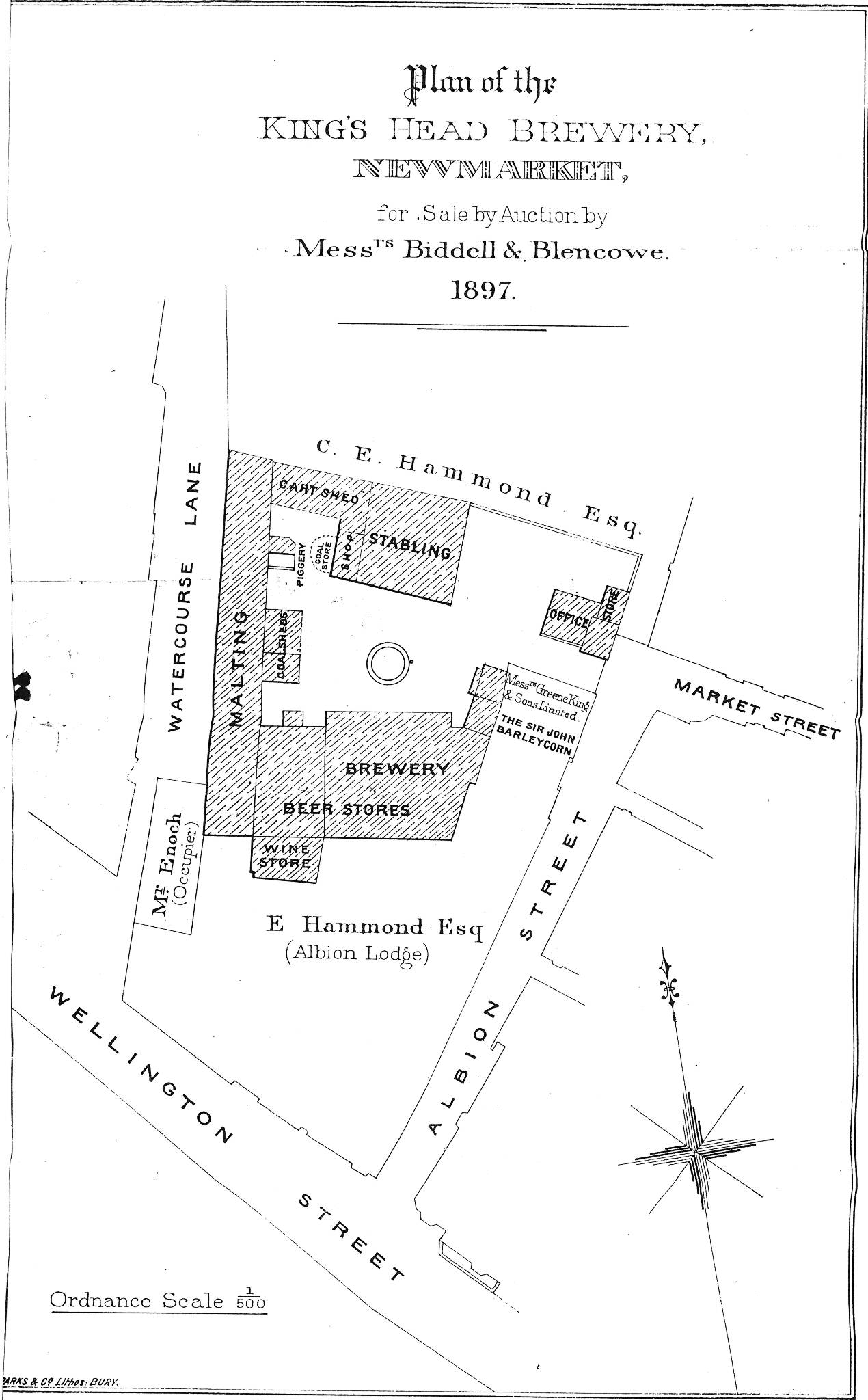
Many thanks to Shirley Crickmere for this plan from her family archive.
-
Charles Frederick Moody
- Harriett Moody died on 5th April 1899 and left part of her estate
to Charles Frederick Moody.
_1899_Probate.jpg)
- One final detail about Harriett - referring back to Robert Moody
Hassall as detailed above, it does of course mean that actually Harriett's
full name was Harriett
Moody Hassall
- which she was baptised on 31st May 1828 in Newmarket (England
& Wales Christening Records, 1530-1906).
-
Charles Frederick Moody died on 31st January 1940 in Battersea,
London.
Many thanks to Shirley Crickmere for his obituary as shown below:-
_1940_Obituary.jpg)
Charles Frederick Moody Obituary
- In this obituary it does refer to 'Harriet' as his aunt - this
does conflict with the fairly conclusive evidence of the baptism
record (for Harriett
Moody Hassall)
giving her mother's name as Harriett
Hassall
and the 1861 census details that lists Harriett as the
Thomas' daughter - which would of course make her his great aunt.
_1861_Census.jpg)
But then in addition to this, as shown in the 1871 census, Charles did live with Harriett from at least 5 years old and actually it was widely understood in the family (but not discussed) that Charles Frederick was most probably Harriett's son - which would explain the very close tie between them and why he inherited from her in her will.
-
Thomas Moody Hassall
-
There's been a missing Moody in all this discussion about the
brewery - Harriett eldest brother; Thomas
Moody Hassall - he's shown in the family tree at the top
of this page. Born in Reach in 1803, Thomas doesn't seem to have
been involved in the brewery as he became a hairdresser, living in Paradise
Row (All Saints Road) on the other side of the town. Thomas'
eldest son from his second marriage; Tom, also started out as a
hairdresser, but by 1871 he'd presumably joined his aunt's business
as he's then listed as a brewer.
This side of the family was consistent with the rest; as in later years they also dropped the Hassall from their surnames.
Thomas' daughter Phillis Moody was actually Shirley Crickmere's husband's grandmother. A family tree for this part of the Moody family is shown on the page for Paradise Row.
-
Brewery Location
- The location of the King's Head brewery is clearly shown on the
1901 map of Newmarket and from this it's possible to reasonably
accurately locate the brewery on a modern day satellite image - as
shown below:-
It's also clear how well this matches the 1897 sales map shown above.
- Entrance into the brewery was from the junction of Market Street
and Albion Street and it backed onto the Watercourse. Albion Street
has now long gone, but if you follow the line of the pedestrianised
Market Street and walk into the Library, the brewery entrance would
have been in the rear right-hand corner, where the stairs are now. The
main brewery building would have been partly in the rear left corner
of Marks & Spencer, but mostly over where the entrance into the
Market Square car park is now. The rear malting buildings would have
stretched across Fred Archer Way towards the New Astley Club (now
the Racing Centre), following
the line of the Watercourse horse path that's still there today.
- On the aerial view shown below, taken in 1920, you can see the
multi-storey main building of the brewery in the centre-right, with
the brewery yard to the left. Behind this is the gate leading into
it from Market Street. Albion Street is out-of-view behind the main
building leading out to the right of the photo. The line of rear
malting buildings can just be seen behind the trees joining onto the main
building at the right. The row of houses in front of the trees are still there
today on St. Mary's Square and are now the Golden Dragon and
Curry Times takeaways (typical). At the far right in the foreground
of the photo is the awnings of what was the Trent's bakery in Wellington
Street.
- Charles William Bakewell Bosworth is shown at the King's Head
Brewery in Kelly's Directory of both 1892 and 1896 - being listed as
a Corn & Coal Merchant. It's known that sometime before 1911
he'd moved into next door Albion Lodge,
being listed there on the census, where he lived until his death on
27th April 1934.
_1934_Probate.jpg)
- In Kelly's 1916 Directory Charles is listed as Corn Merchant in
Albion Street, with no mention of the brewery and on a 1926 map of
Newmarket the brewery is shown as disused.
- The aerial photo below was taken in the 1950s and shows that the
main brewery building had been demolished by then. The brewery yard
is still clearly visible but the rear malting buildings have lost their
roofs. The line of the Watercourse can be seen behind these
buildings with its posts and rails.
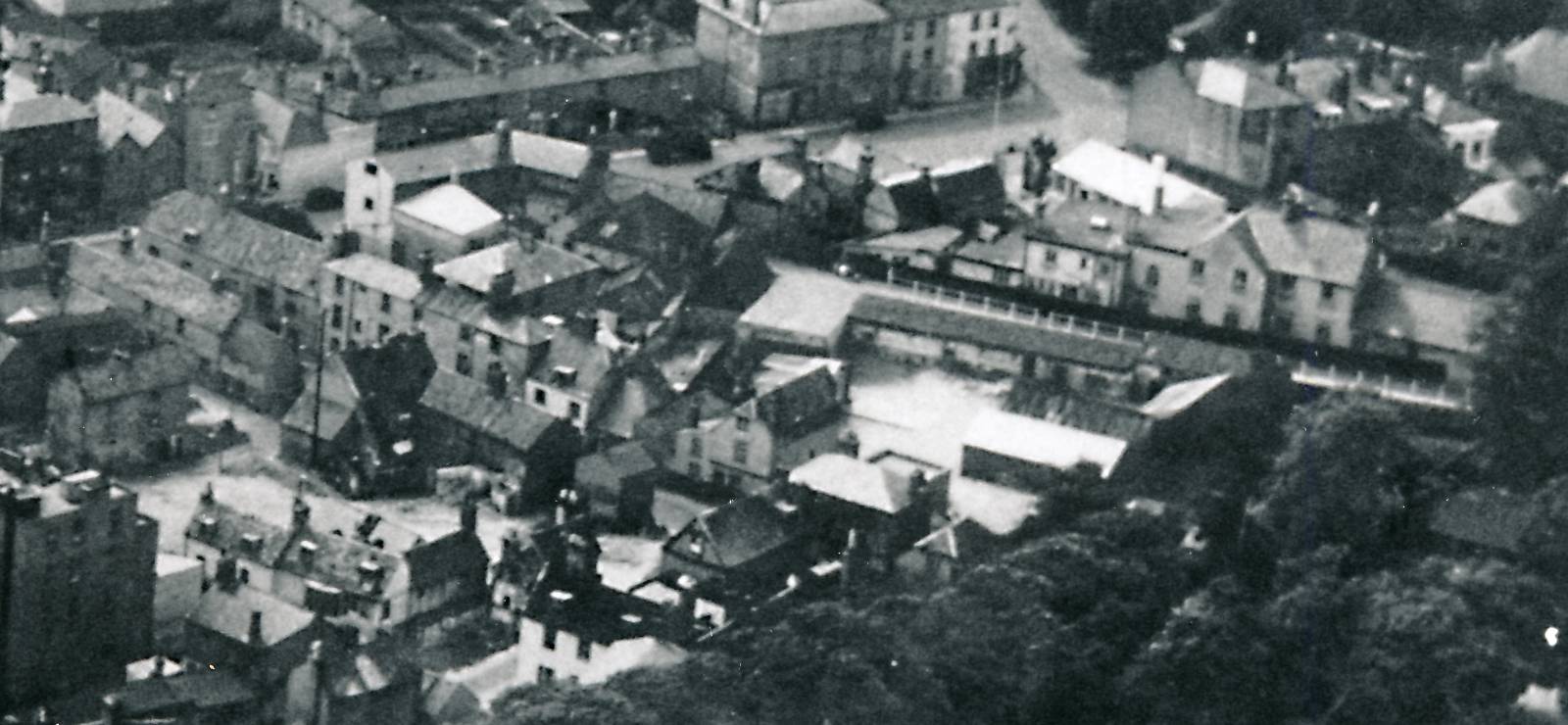
Many thanks to Mike Mingay for this photo.
- It's not known exactly when the main brewery building was demolished, but
progressively over the years most of the buildings on the whole of
the Rookery
disappeared until the remainder were flattened when the Rookery
Shopping Centre was built in 1974. The photo below is taken from the
old Rookery car park in about 1970 that existed where the houses of
the Rookery used to be. Hunter & Oliver's wine merchants that can be
seen in the background is actually in the yard of the former brewery
and the house next to it on the left is what used to be at the
entrance into the yard - the rear of it can be seen in the 1920
aerial view above, with the small dormer window on the side facing
onto the main brewery building.
Many thanks to 'Old Newmarket' for this photo.
- This house may have been one of the main reasons why the brewery
was moved to this location - as on Chapman's 1787 map of Newmarket
it's listed as being the Cock public house and according to Tony
Pringle previously in 1757 it was the Unicorn public house - so the
tradition of brewing at this location had been going on for many
years. On the 1897 sales plan above, this building is shown as still
being owned by Greene King and was by then known as the Sir John
Barleycorn.
- According to well known Newmarketian Bill Smith, he can remember
that in the 1950s that the Post Office used to use the King's Head Brewery
yard to keep their vans.
-
Building Changes
Suffolk Record Office, Bury St Edmunds Branch
Newmarket Urban District Council Records
Reference EF 506 - Office in King's Head Brewery, Albion St, for C.F. Moody EF 506/6/1/H92 Dec 1892
2 docs
- Return to top of page
| Saturday 23 January 1858, Cambridge Independent Press Moody & Cole - At Newmarket, on the 19th instant, found dead in his bed, Tyrrell Moody, Esq., in the 79th year of his age; and on the same day, Mr. Thos. Cole, many years clerk to the above Tyrrell Moody, Esq., aged 51. Sudden Death.- On Tuesday morning, Mr. Tyrrel Moody, brewer of this town, was found dead in his bed. He went bed on Monday night in the same state of health and sprits. No inquest was required, the doctors could satisfactorily account for the cause of death, he having been very weak and infirm condition for time past. It is a very singular fact that his confidential clerk, Mr. Thos. Cole who had some time left the service of Mr. Moody in consequence ill health, died within an hour of his master. We understand that Mr. Moody had left Cole an annuity, the principal which will revert the Moodys’ estate. |
